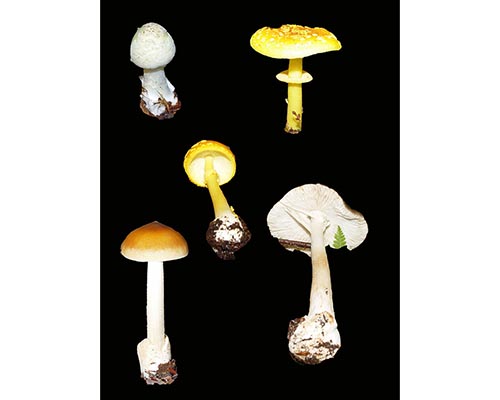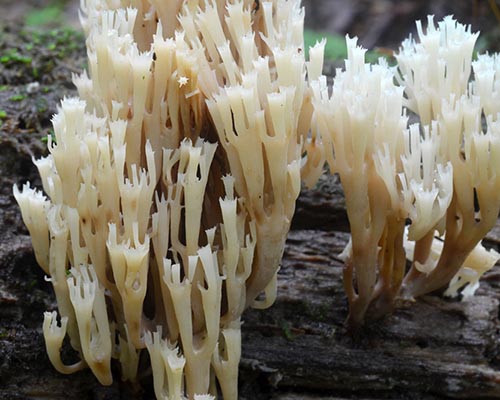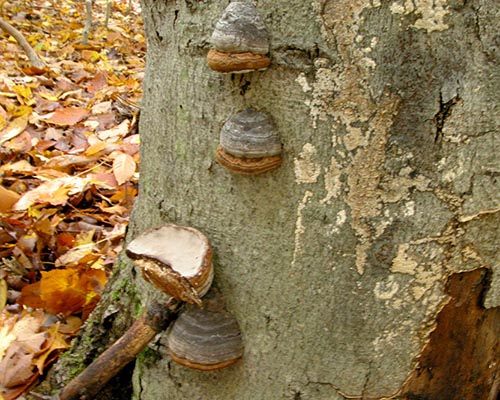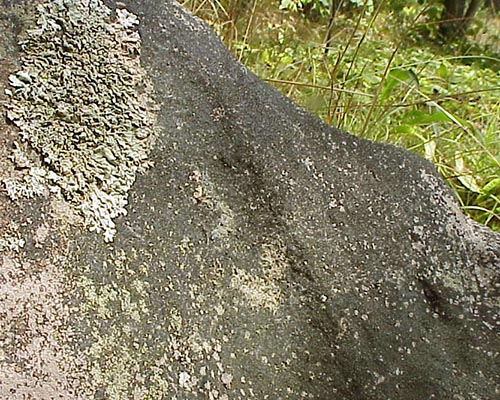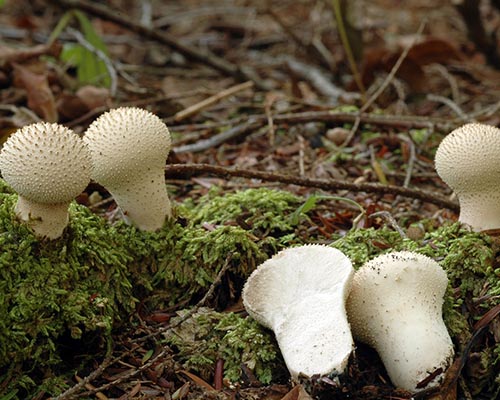Fungi are neither plants nor animals. The kingdom fungi is one of the six kingdoms of life, along with plants, animals, protists, bacteria and archaea. Molds and yeasts are part of the kingdom fungi, as are mushrooms.
Fungi are heterotrophic, meaning that they cannot make their own food. They must therefore obtain energy from other sources. In order to do this, fungi can be saprobic, parasitic or mutualistic. Saprobic fungi are decomposers. They break down dead organic matter in order to make energy. Parasitic fungi take their energy from other living organisms and often cause diseases for their hosts, including humans, as a result. Mutualistic fungi also get their energy from another organism, but they give something in return; the relationship is mutual. Since fungi play all of these roles, they are very important ecologically. The Symbiosis station discusses parasitism and mutualism — types of symbiosis — at more length.
One type of mutualistic fungi is mycorrhizal fungi, which have a symbiotic relationship with many plants. These fungi, in groups such as the Amanita and boletes, extend the surface area of the plants’ roots and deliver necessary nutrients, such as water and phosphorous, to the plant. In return, the plant provides the fungi with energy-rich carbohydrates.
Fungi are not always restricted to a single ecological role. The crown-tipped coral fungus (Artomyces pyxidatus), for example, is both sabrobic and mycorrhizal. This fungus is common in the Adirondacks, growing on decaying wood and is easily recognized by its coral-like branches with crown-shaped tips. Horse’s hoof fungus or elephant’s foot fungus (Fomes fomentarius) is a parasitic fungus that can be found on birch trees in this area. It infects the trees through broken bark and causes rot. It typically lives on long after its host tree has died, changing its ecological role from parasite to decomposer. It has been used for thousands of years to make amadou, a very flammable tinder.
Another type of mutualistic fungus occurs in lichens. A lichen appears to be a single organism but is actually a composite: a fungus and a partner that can be a green alga, acyanobacterium or both. In this mutualism, the fungus offers protection, water and nutrients. The partner produces energy through photosynthesis. Cyanobacteria in lichens may also contribute significant amounts of nitrogen to the forest. Lichens are commonly found growing on rocks and tree bark.
The gem-studded puffball (Lycoperdon perlatum) is a puffball mushroom common in meadows, fields and along roadsides in late summer to fall. It can reach a diameter of a little over two inches and a height of about three inches. This puffball is known also for its edible qualities, having a mildly sweet flavor. However, with many poisonous look-a-likes it is best to use extreme caution when foraging for these mushrooms.
For many fungi, the part of the fungal anatomy that is seen above ground is the fruiting body that contains spores for distribution and multiplication. The body of the fungus, called the mycelium, is found underground or inside the host organism. Many fungi are therefore only visible above ground for a brief period each year.
Fungi are important economically. Saccharomyces cerevisiae and related species of yeast give us bread, beer and wine. “Cerevisiae” is Latin for “of beer.” Fungi are also essential in making other foods and drinks, such as soy sauce, sake and tempeh. Many mushrooms are edible, although many are also highly poisonous. Many medicines are derived from fungi.
As you continue on the trail, look for representatives of this unique kingdom of organisms.

